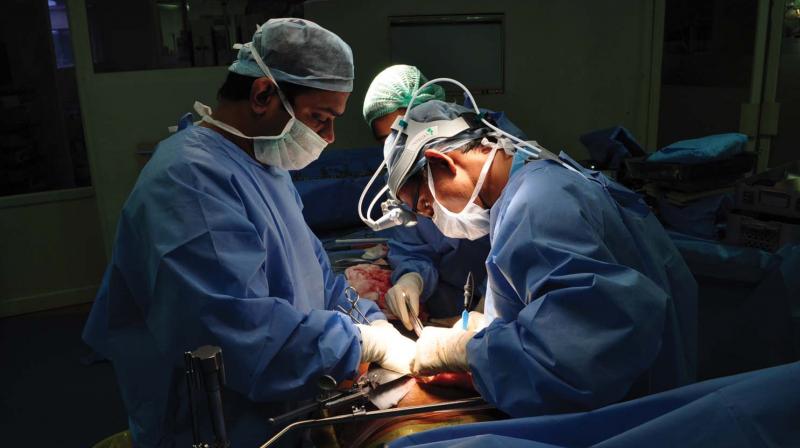What ails the liver?

THIRUVANANTHAPURAM: An overwhelming 25 per cent of the global population has Non-Alcoholic Fatty Liver Disease (NAFLD), a condition where fat accumulation makes up more than five to ten per cent of the liver. In Kerala, liver specialists are worried over the way women are getting affected with NAFLD which is leading to liver cirrhosis. Changes in lifestyle, rising affluence, junk food consumption, obesity and rising incidence of diabetes have all contributed in varying degrees to the issue. K. Sunitha, a social media professional based in the capital city, lost her 70-year-old mother, K. Sujatha to liver cirrhosis four months ago. Though a strict vegetarian and a complete teetotaller, she developed swellings after a fall at her home.
Though she was generally healthy, there was no requirement to do a full body check up which prevented her family from having an early diagnosis. Sunitha recalled that within two years of diagnosis, she died despite providing good treatment. “When my mother developed swelling on the face initially, we thought it was thyroid issues. Despite putting her on a healthy diet including liver cleaning diets like beetroot and carrot and giving her raw vegetable juice, her condition deteriorated”, said Sunitha.
Unfortunately, Sunitha is not alone in this battle. Sujil Chandrabose, managing director of Big Push Concepts Private Limited in Kochi, returned from Dubai to Kochi to take care of his aged mother, Shubha Chandrabose. But over the last two years he has been struggling to cope with the stress he has been having in the role of a carer. “My 75-year-old mother had a long history of peptic ulcer due to eating spicy food. My mother’s case is a classic example of bad food management. Over the last one year, she was admitted eight times in the hospital. She is pulling along somehow now”, said Sujil.
Sujatha and Shubha contracted liver disease with no significant history of alcohol consumption. Both of them were not obese as well. Dr. B. Venugopal, senior consultant and laparoscopy surgeon at KIMS hospital, Thiruvananthapuram, told DC that women who don’t consume alcohol can also be affected by fatty liver disease due to unhealthy food habits and a sedentary lifestyle. “Over the years, NAFLD develops to a much more serious condition called fatty swelling or non-alcoholic steatohepatitis (NASH) where the liver becomes inflamed and scarred. There has been no epidemiological study conducted on the rise of NAFLD among women in Kerala. But with my 25 years of medical experience, I can vouch that there has definitely been an increase in fatty liver turning to liver cirrhosis among women”, said Dr. Venugopal.
But another leading senior gastroenterologist, Dr. Rajeev Jayadevan of Sunrise Hospital in Kochi told DC that because of awareness people are undergoing investigation. “Since fatty liver is being increasingly reported there has been awareness among the people. Investigations are wrongly used and it is a mess out here. In the West, if you had to undergo an investigation, it has to be based on algorithm”, said Dr. Rajeev who has worked in the UK, Netherlands and the US.Dr.Rajeev who is a prolific writer on medical subjects, added that vast majority of fatty livers are harmless. He suggests that the first step is to determine if it is benign fatty liver (steatosis) or fatty liver or fatty liver with associated inflammation (steatohepatitis). Doing regular physical exercise is a crucial part of treatment.
“Weight loss through a sustained diet and exercise is the most effective step in the management of non-alcoholic fatty lover disease. Contrary to popular belief, fatty liver and associated illnesses are more related to sugary foods than fatty foods”, added Dr. Rajeev. But Dr. G. Jeladharan, senior gastroenterologist in SK Hospital and Ananthapuri Hospital in Thiruvananthapuram, says that 15 – 20 percent of fatty liver cases turn to liver cirrhosis. He says patients getting affected with Hepatitis B and C will only increase the chances of liver cirrhosis.

